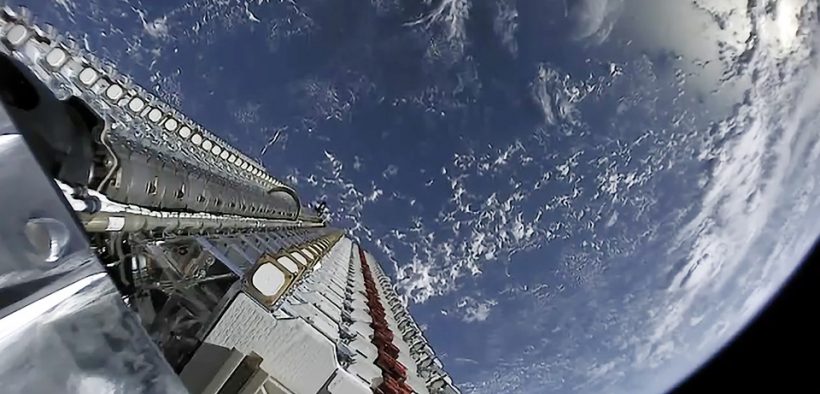Global Internet Access Closer to Reality With Successful SpaceX Launch

“Enabled by a constellation of low Earth orbit satellites, Starlink will provide fast, reliable internet to populations with little or no connectivity.”
On Thursday, Starlink, Elon Musk’s ambitious global internet program, took a giant step forward as it successfully launched the first 60 of 11,000 satellites planned for low orbit above Earth.
After six such launches, Starlink hopes to have internet coverage available in the Northern United States and Canada. Starlink anticipates offering global coverage after 24 launches and expects to be on a pace of two to six launches by the end of 2019.
Starlink’s mission according to their website:
“SpaceX is developing a low latency, broadband internet system to meet the needs of consumers across the globe. Enabled by a constellation of low Earth orbit satellites, Starlink will provide fast, reliable internet to populations with little or no connectivity, including those in rural communities and places where existing services are too expensive or unreliable.”
Thursday’s launch was the third attempt in recent weeks after SpaceX scrubbed its first attempt on May 15 due to high winds and again scrubbed an attempt the following day to complete further inspections.
Standing down to update satellite software and triple-check everything again. Always want to do everything we can on the ground to maximize mission success, next launch opportunity in about a week.
— SpaceX (@SpaceX) May 17, 2019
After the two postponements, SpaceX celebrated and documented Thursday’s succesful launch on Twitter:
Liftoff! pic.twitter.com/QNKOX8B0Dc
— SpaceX (@SpaceX) May 24, 2019
.@SpaceX #Starlink satellite development team in Redmond, Wash., watches countdown coverage. pic.twitter.com/AH63bbmoOC
— Alan Boyle (@b0yle) May 24, 2019
SpaceX has a contract with the Federal Communications Commission to orbit two “flocks” of satellites. As Space.com wrote, “There will be two Starlink flocks: one constellation of 4,409 satellites and a second constellation of 7,518 satellites. The second, larger constellation will fly at a slightly lower altitude, but together both will provide affordable coverage to every part of the globe.”
Competing with SpaceX in the “space internet market” are OneWeb, Amazon, Telesat, LeoSat Enterprises, Boeing and Facebook.
Starlink is only the first phase of Musk’s even more ambitious project to send a million humans to colonize Mars. According to GeekWire, Starlink will provide revenue for Musk’s Mars project. GeekWire reported:
Musk said it’s hard to imagine SpaceX’s launch business amounting to much more than $3 billion a year under current conditions. In contrast, the annual revenue from satellite data services could bring in $30 billion or more a year, he said.
“We see this as a way forward to generate revenue that can be used to develop more advanced rockets and spaceships,” he said. “And that, we think, is a key steppingstone on the way toward establishing a self-sustaining city on Mars and a base on the moon.”
Scenes From Thursday’s launch:
Falcon 9 launches 60 Starlink satellites to orbit – targeting up to 6 Starlink launches this year and will accelerate our cadence next year to put ~720 satellites in orbit for continuous coverage of most populated areas on Earth pic.twitter.com/HF8bCI4JQD
— SpaceX (@SpaceX) May 24, 2019
Main engine cutoff and stage separation confirmed. Second stage engine burn underway pic.twitter.com/trGBZyJGD1
— SpaceX (@SpaceX) May 24, 2019

















